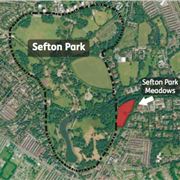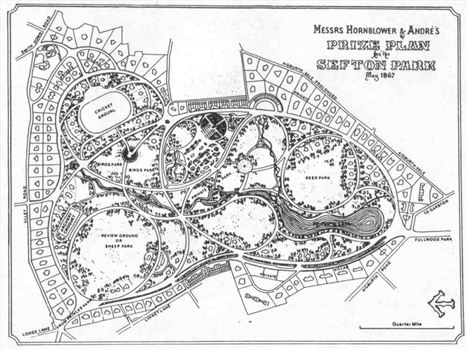THE controversial sale of Sefton Park's Meadowlands is expected to be given the go-ahead this week.
Members of Liverpool City Council’s Regeneration Committee, who will make the decision, have received more than 1,200 written objections to the proposed sale of the 2.62 hectare site which was revealed in March.
Mayor Joe Anderson wants to flog the land for an executive housing development.
But Thursday's Town Hall meeting is likely to “note the comments and objections” - and still back the plan. It will then go to the Mayor and his cabinet for final approval.
Under the rules for the “disposal of public open space”, the city council has been legally obliged to go through a public consultation exercise on whether to sell or keep the land which Mayor Anderson says is used "mainly as an area for dog fouling".
Irony aside, few of the leading lights in the debate expected it would be no more than going through the motions.
Even so, the expected decision will come as a blow to an army of campaigners wanting to keep the Meadowlands as green space.
The council stance is the Meadowlands does not form part of historic Sefton Park, and in any event it would represent just half of one percent of green space within a mile radius.
This week's expected decision and the final rubber-stamping from the mayor and cabinet will trigger the procedures to sell the site, described as “incidental open space in Park Avenue, Liverpool 18”.
It will still be up to the planning committee to consider detailed plans for the development, however, given the Mayor’s decision and Regeneration Committee’s endorsement, it is hard to see it standing in the way.
Wrong
At that stage, there could be conditions attached over the mature trees lining the site and the scale and number of dwellings. But unless there is a legal challenge the Meadowlands will soon be lost to housing development.
The attractive site, at the bottom of Queens Drive, stands on the “wrong” side of the park’s perimeter road, Mossley Hill Drive.
Objectors have submitted ancient plans they say shows the Meadowlands was part of the land bought from Lord Sefton in the 1860s to create a new park for the city. In the original plans, the scheme to line the park with large villas would almost certainly have extended to the Meadowlands site. However, nothing was ever built there and the land has remained as green space ever since.
Birds, bees and the green lungs of a city: those objections in full
THE executive summary to Thursday’s meeting (in the name of Regeneration Cabinet member Cllr Malcolm Kennedy and Regeneration Director Nick Kavanagh) states: "In response to the open space notice 1,284 objections were received.
"As required under s123 of the Local Government 1972 the Cabinet are obliged to consider these objections (as detailed in appendix A). After due consideration of the objections and for the reasons set out in the report and appendix A it is recommended that the Council continue with the proposed sale of the land.”

Appendix A reveals cases keeping the Meadows range from concerns that there is already a surplus of land that could be built on in south Liverpool and that the both the ecology and mental wellbeing of city dwellers could suffer.
These are the main objections received on post cards (including the name, address and signature).
* "Sefton Park Meadows is part of our historic public green space and conservation areas of Sefton Park, important to the Park’s character and physical landscape features, specifically its trees and open grassland."
* "Loss of amenity and openness will degrade this special site and its contribution to provide high quality recreation, health, and ecology. benefits for all of us."
* "This urban green space has unique economic, social and biodiversity value now for its working ecosystems that are regulating air, water, noise, pollution and climate. The health benefits for us, of green space, are assessed at £300 per annum per person."
* The site has protection as green space within Liverpool’s Unitary Development Plan until 2016."
What the objectors said in full - and how the council responded to each argument - can be read here








